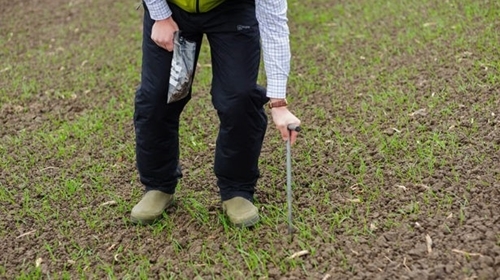Written by Owen Williams, artist & chairman of Ceredigion
2 Minute Read

A scoping study undertaken in west Wales last winter which looked at whether woodcock might be a good indicator species for soil health, has revealed some interesting preliminary data. The study used thermal imaging to locate and plot woodcock on fields to establish areas of ‘high use’ and areas of ‘low use’ and then compared soil variables between these areas.
Preliminary analysis of the data found slightly more woodcock in areas with higher invertebrate numbers and overall invertebrate weight, however, this was less marked than expected. When investigating data for soil organic matter (SOM) it was found that overall, there was a stronger positive correlation between woodcock use and SOM than that with the invertebrate data.
The soil variable showing the strongest correlation with woodcock use of pastures was stone burden. Much of the soil in the study area was very shallow (10-15cm) and in uncultivated old pasture the stone burden lay at the base of the sample. However, on fields that had been cultivated in recent years, ploughing had disturbed the stones and distributed them throughout the soil column. The data suggest that this was a significant deterrence to woodcock feeding on these fields. As invertebrate numbers didn’t always negatively correlate with stone burden it seems fair to conclude that the physical difficulty of probing in stony soil was the likely reason for woodcock avoiding these areas. High levels of stone in soils also constitutes a physical barrier to root penetration and may prevent good drainage, both of which are vital to good soil health.
This study was limited by delays in funding due to Covid-19, resulting in a rush to complete the fieldwork before woodcock left on their spring migration. The number of soil samples was reduced to fit the timescale but, despite this, the scoping study has served to highlight the importance of good soil management, particularly in areas with thin soils such as many parts of west Wales. These livestock pastures are an important habitat for a significant proportion of the UK wintering woodcock population. It is clear that careful management of soils in these areas will ensure that this continues to be the case. Better soil management should bring the added benefits of higher biodiversity and greater carbon capture, at the same time as improving pasture yields.